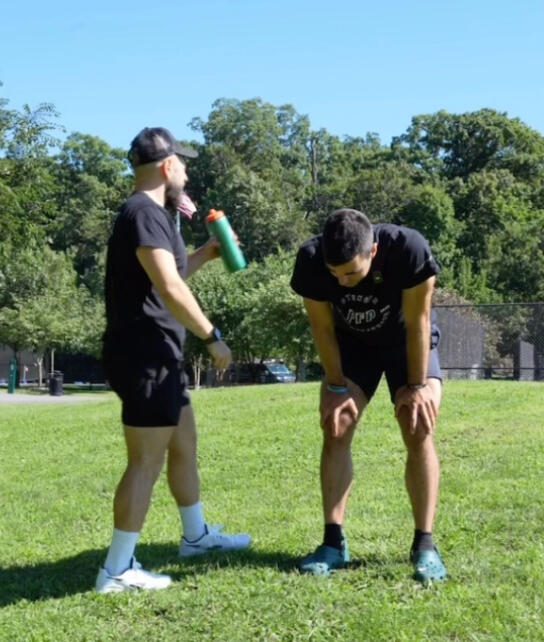
Hands on Knees vs. Hands Over Head: Why the “Bent-Over” Position Optimizes Breathing and Recovery for Athletes
November 2024
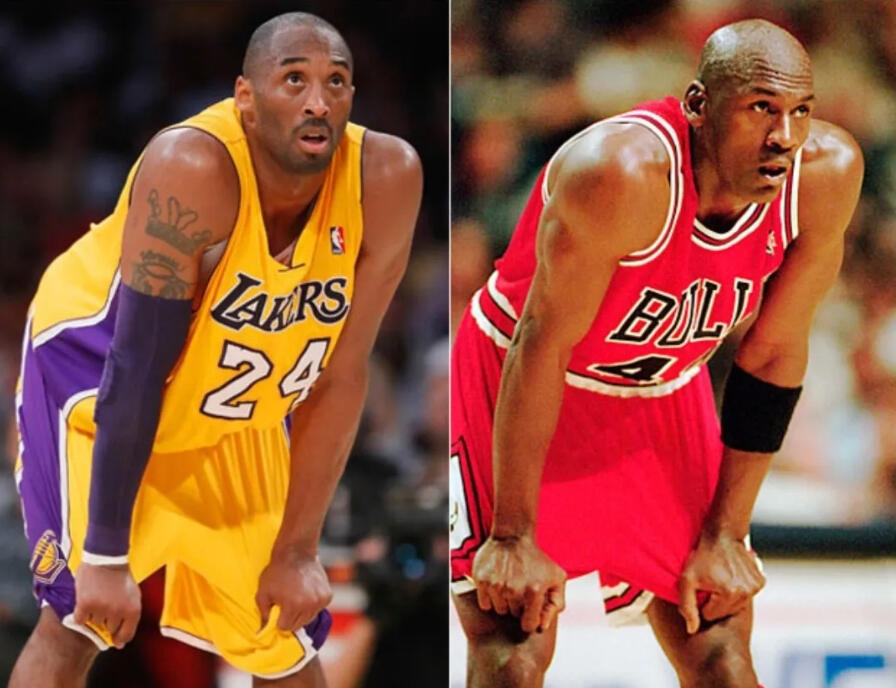
Everyone has a memory of doing some form of physical activity or playing some level of sports and getting out of breath. Someone - a coach, a teammate, a friend - probably told you to put your hands over your head to “open up your chest” so you can breathe “better” when you naturally went into a bent-over, hands-on-knees position to begin with like Kobe or Michael Jordan here. What if we told you that your instincts were right! The GOAT’s knew what they were doing here!
To understand why this position is most efficient for breathing, we first need to understand basic breathing mechanics. The primary breathing muscle is called the diaphragm - a dome shaped “umbrella” muscle that sits directly under the lungs and spans the entire circumference of the rib cage. You can see the right side of the diaphragm is bigger than the left side, which is one of the many contributors to the asymmetry of the human body (but that’s a TOTALLY different article). For the purposes of this article, the right side of the diaphragm can work better during breathing, but the left diaphragm has an easier time moving downward as you breathe in.As you inhale, the diaphragm contracts by flattening (like an umbrella when you open it), allowing for the lungs to move downward in the chest cavity. As you exhale, the diaphragm recoils upward and relaxes by taking on a dome shape, helping you create the necessary pressure to expel the air out of the lungs.

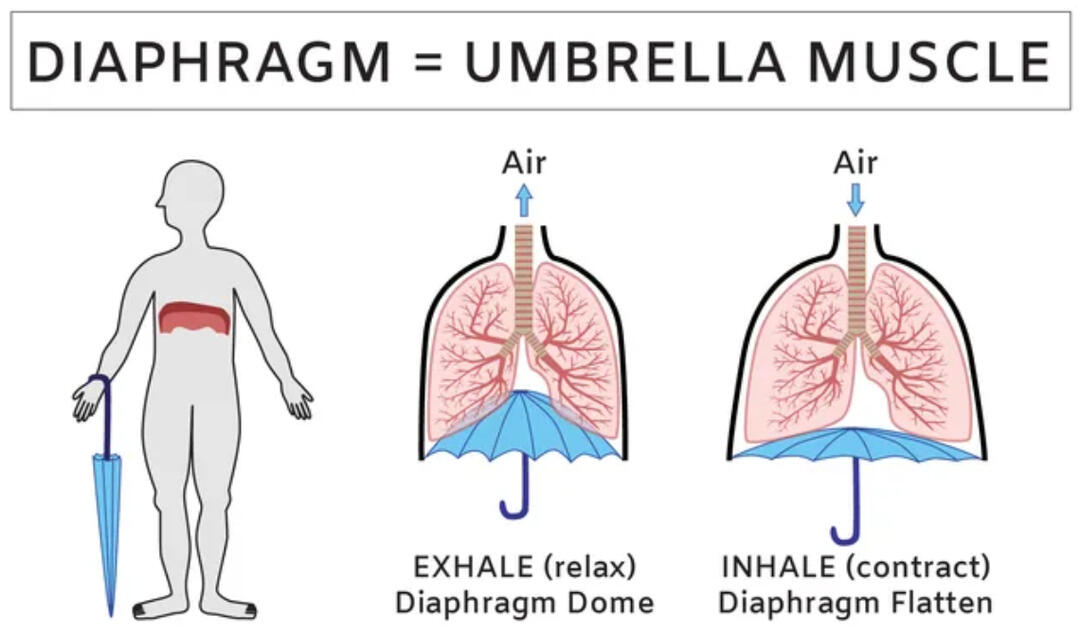
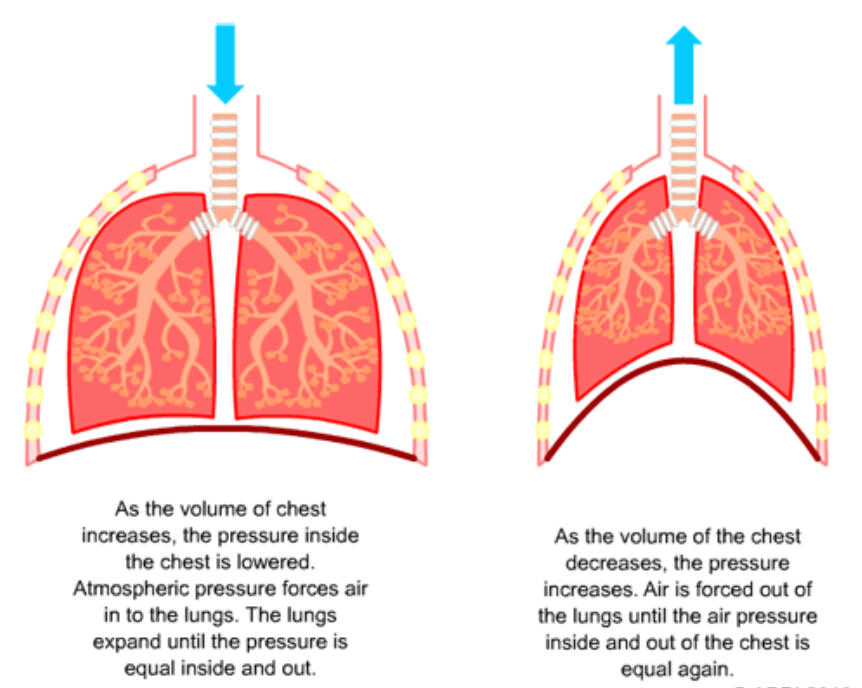
Speaking of pressure, we have to discuss the relationship between pressure and volume to fully understand breathing. This is where that high school physics class finally comes in handy. Boyle's law states that the pressure and volume of a gas have an inverse relationship; in simple terms, if volume increases, then pressure decreases. If volume decreases, pressure increases.When we breathe in, the diaphragm drops, the lungs and chest cavity expand, and volume increases. The pressure of air outside the body is now greater than inside the body, driving air into the lungs. When we exhale, the diaphragm ascends, increasing pressure and decreasing the volume of the lungs and chest cavity; this pressure gradient pushes air out of the body.
The body does not have just one diaphragm, it has TWO! The common term for the second diaphragm is the pelvic floor; but for the purposes of this article, we will refer to the diaphragms as the thoracic diaphragm and pelvic diaphragm. These two diaphragms move synergistically - as you breathe in, the thoracic diaphragm and pelvic diaphragm descend; as you breathe out, the thoracic diaphragm and pelvic diaphragm ascend.
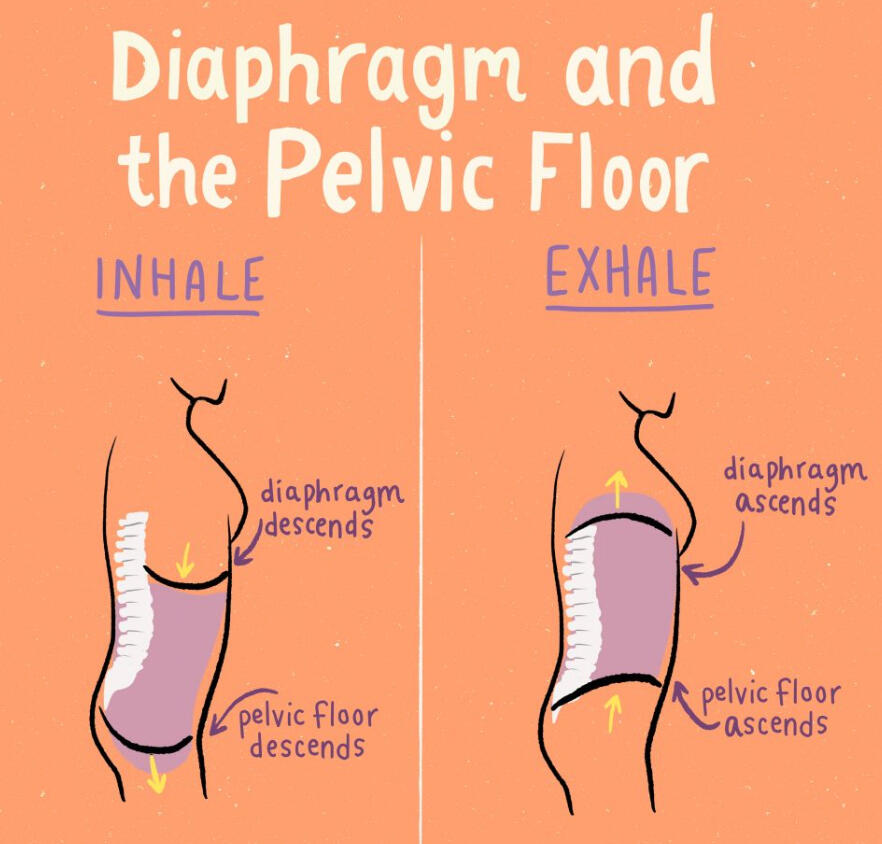
Starting simple and moving into more complex breathing dynamics, here’s the complete rundown of what happens when you inhale and exhale.
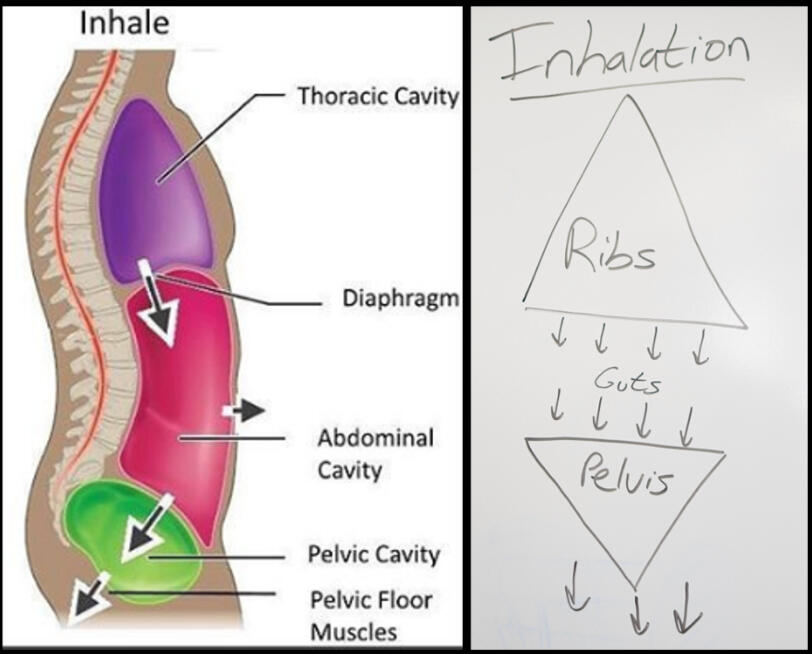
Inhalation
1) Diaphragm descends
2) Guts descend
3) Pelvic floor descends
4) Lungs fill up with air from the bottom up
Exhalation
1) Pelvic floor ascends
2) Guts ascend
3) Diaphragm ascends
4) Lungs empty from the top down due to increase pressure generated
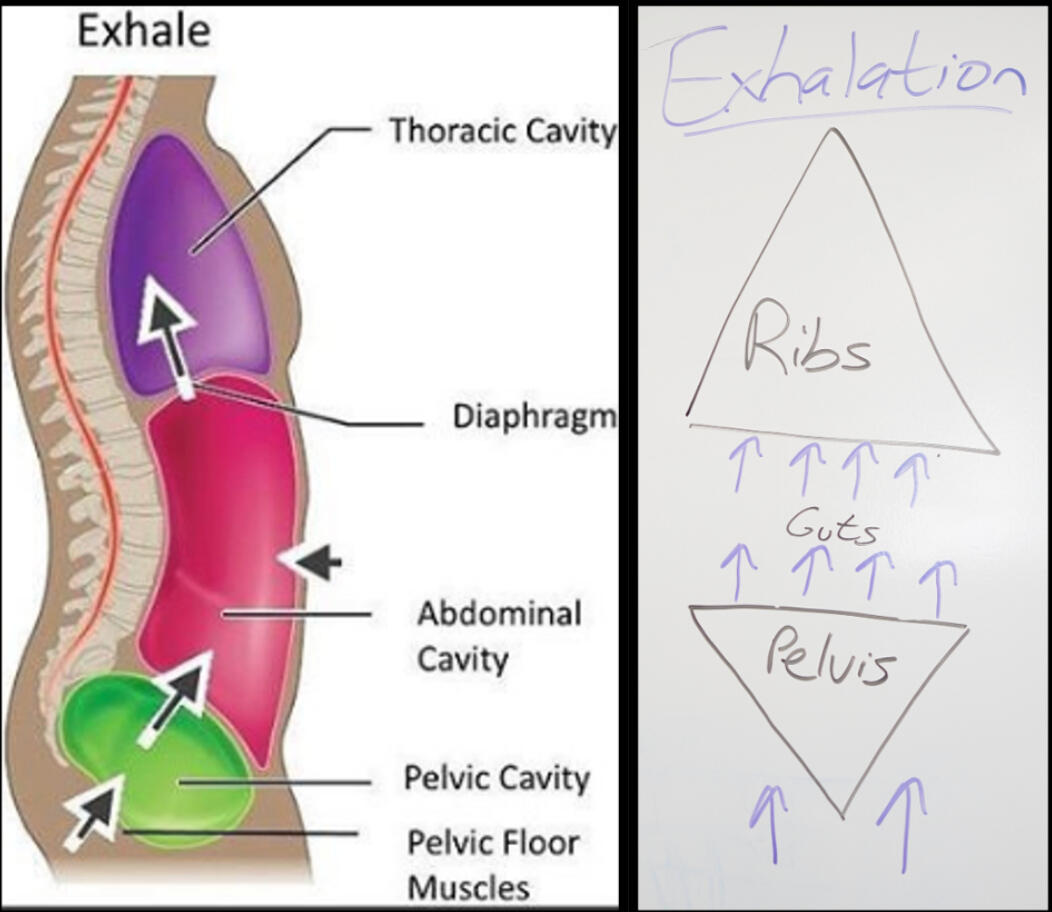
Seeing how these two diaphragms move synchronously during breathing, keeping these two diaphragms stacked on top of one another will allow for an efficient pistoning effect, effective breathing mechanics, and the greatest amount of air moved during each breath. Now, let’s take a closer look at the two breathing strategies: hands on knees and hands over head.
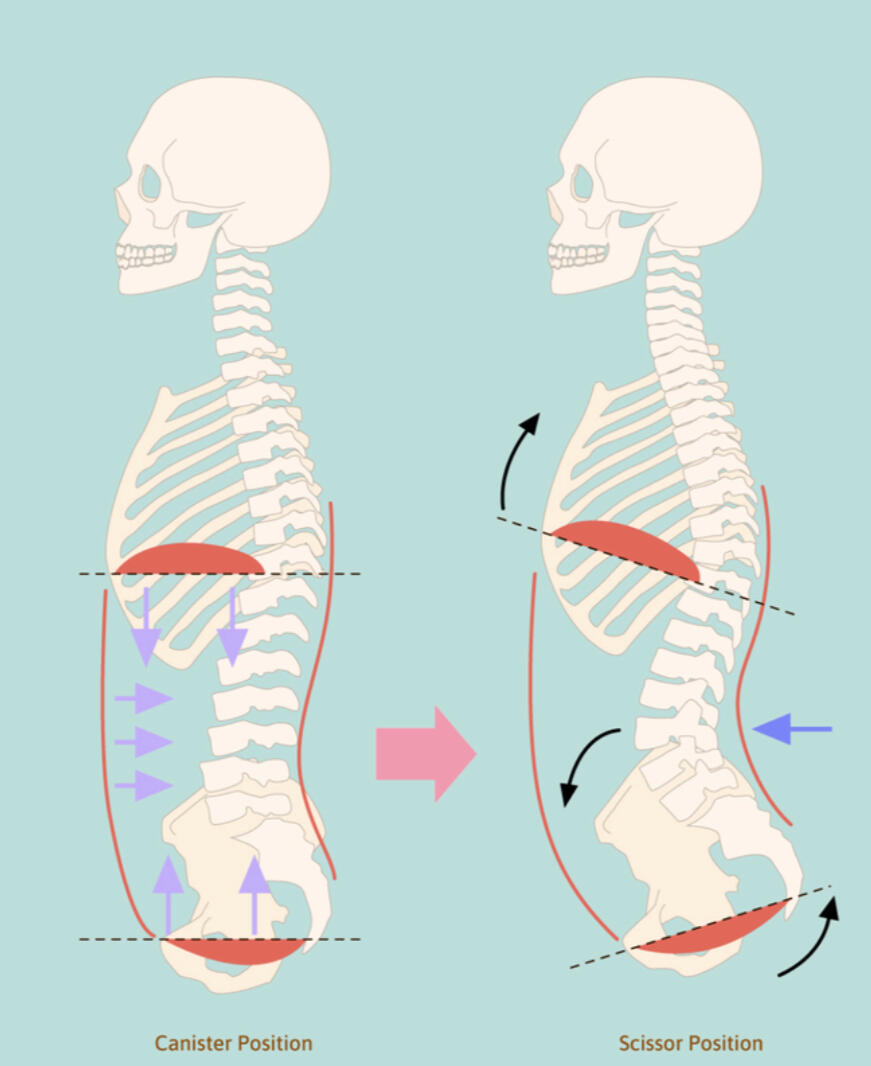
By placing your hands over your head, your front lower ribs come up and outward (rib flare), just like the skeleton on the right of the picture. Due to the position of the ribcage and pelvis in this position, you can see how the diaphragms are not stacked on top of one another, leading to inefficient breathing mechanics and movement of air into the lungs. For a person out of breath after exerting himself or herself, this is not optimal for recovery.Conversely, by hinging at the hips and placing your hands on your knees like Kobe and MJ, the diaphragms are stacked on top of one another due to the ribcage and pelvis position like the skeleton on the left of the picture. This leads to a more effective breathing pattern, more oxygen being taken in, and shorter recovery time for the athlete.
If the skeleton demo did not click, think of the computer as your thoracic diaphragm and the pillow as your guts. With a stacked position, the diaphragm has leverage to descend appropriately as you breathe in (the second picture). With a lower rib flare (lowers ribs sticking out and up), the diaphragm cannot effectively work as a piston. Without the pistoning effect, the guts do not descend into the pelvis and cause the pelvic floor to expand during the inhalation. This will also make the rebound effect / contraction of the pelvic floor during exhalation less effective as well.
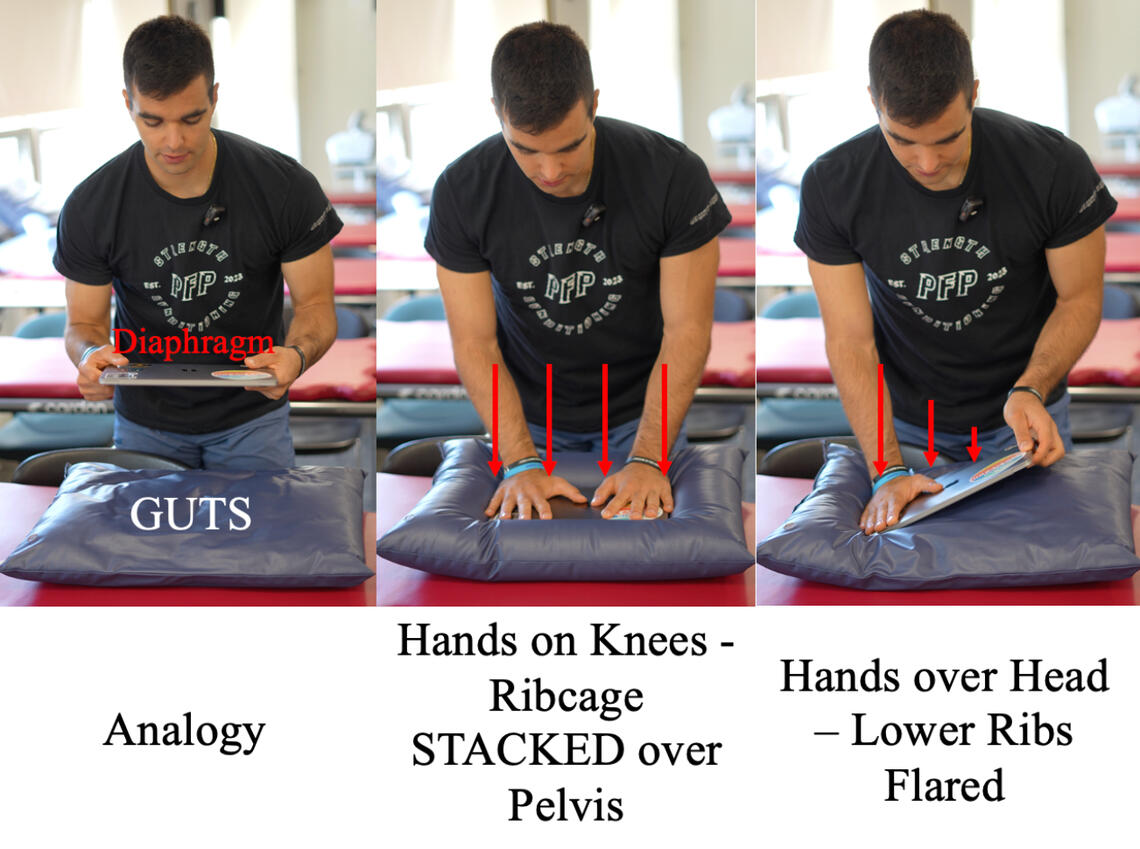
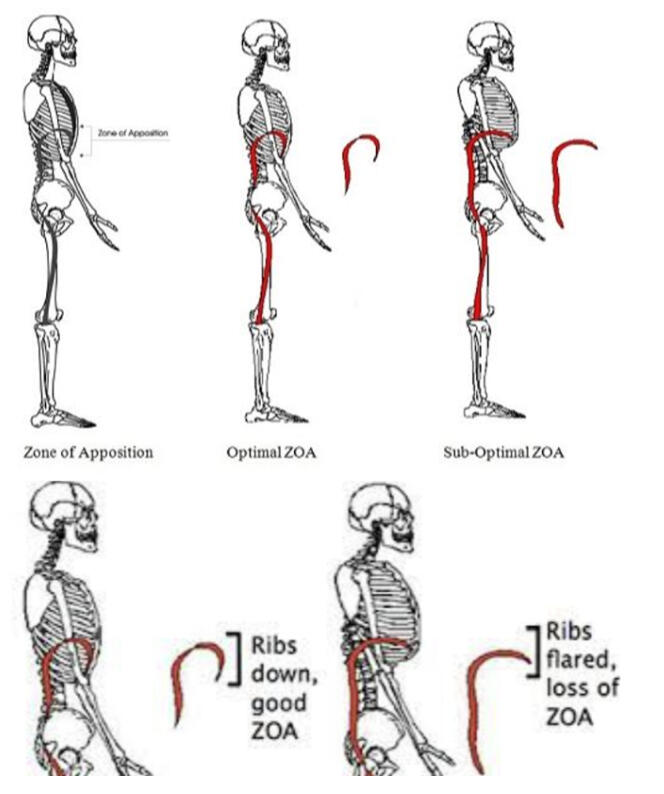
A staple of our Doctor of Physical Therapy (DPT) education involves evidence based practice (EBP); in other words, having a research based backing to everything we do. A research article by Boyle et al. 2010 started the conversation by proposing that one can speed up the recovery between exercise bouts by maximizing the surface area of the diaphragmatic zone of apposition (ZOA). The ZOA refers to the space where the diaphragm starts in the ribcage and goes all the way down to the lowest ribs. Optimizing the ZOA surface area allows the diaphragm to operate with maximal efficiency, which occurs during spinal rounding (AKA spinal flexion) rather than spinal arching (aka extension).Raising the arms overhead actually restricts the mechanical efficiency of the thoracic wall and ab muscles. Because of this, a standing posture with hands over head may be less advantageous to postures that increase the ZOA - the hands on knees.
Another study titled, “Effects of Two Different Recovery Postures during High-Intensity Interval Training” by Michaelson et al., 2019 investigated the effects of these two recovery postures - hands over head (HH) and hands on knees (HK) as recovery methods immediately after high-intensity interval training (HIIT). The hands on knees posture led to an improved heart rate (HR) recovery, a higher rate of carbon dioxide (CO2) elimination, and greater air movement into and out of the lungs (called tidal volume) compared to hands over head posture following intense exercise (Michaelson et al., 2019). Check out the table for a succinct summary of the research study!

